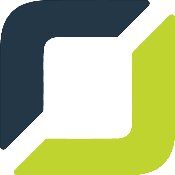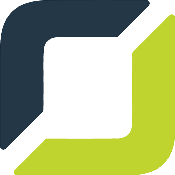Database migration is a multiphase, complex process that includes a thorough assessment, database schema conversion, script conversion, data migration, performance tuning, functional testing and other essential steps. Following the right database migration method based on the organization’s unique needs and requirements can help streamline these phases and ensure a satisfactory outcome. One of the biggest decisions that businesses must make is which database migration method to use. Continue reading to learn more about the database migration process, as well as the different types of database migration methods available and their benefits.
When Do Organizations Require Database Migration?
Organizations may seek the assistance of a data migration company for a wide range of reasons. Database migration is often sought when a business is ready to upgrade, replace or expand its storage systems or equipment. It is also needed during legacy software upgrades and replacements. Businesses that are making the move from a local storage system to a cloud-based system can use database migration to optimize their operations.
Other common reasons database migration is used are for website consolidation, infrastructure maintenance, data center relocation or consolidation of information systems. Businesses may also hire a data migration company when installing new systems to coexist and augment current applications that share the same dataset. Regardless of why an organization is choosing to use database migration, it is important to carefully determine which method is most appropriate in order to meet business objectives.
What Are The Common Types Of Data Migration?
 There are six primary types of data migration that businesses may use to transport data from one platform to another, as outlined below. When selecting a database migration method, it is critical to understand how each database migration method works and consult with a data migration company that can provide insight into which is best for your existing systems and future organizational goals.
There are six primary types of data migration that businesses may use to transport data from one platform to another, as outlined below. When selecting a database migration method, it is critical to understand how each database migration method works and consult with a data migration company that can provide insight into which is best for your existing systems and future organizational goals.
1. Storage Migration
Storage migration refers to the migration of data from one storage location to another. Data is essentially moved from one physical medium to another physical medium, such as the movement from paper to digital, hardware-based storage to virtual cloud-based storage, tapes to hard disk drives (HDDs) or HDDs to solid-state drives.
Businesses generally choose this storage migration method, not because of a lack of space, but because they want to upgrade their storage technology. Storage migration does not normally affect the format or content of data; instead, this method involves data validation, data cleaning, cloning and redundancy.
2. Database Migration
Databases refer to data storage media that contains data that is structured in an organized manner. A database is managed through a database management system (DBMS).
The process of database migration involves upgrading from a current version of DBMS to a later version of the same DBMS, or moving from one DBMS to another. The latter tends to be more complex as the target system and source system typically use different data structures.
3. Application Migration
Application migration is when an organization executes a change in application software, or changes its application vendor. This migration method requires the movement of data from one computing environment to another. The new application platform may need a radical transformation after the migration due to new application interactions.
One of the biggest challenges that come with application migration comes from having an old infrastructure and target infrastructure with distinctive data models that use different data formats. Vendors may provide application programming interfaces (APIs) to protect data integrity.
4. Cloud Migration
Cloud migration has quickly become one of the most popular database migration methods. This migration type involves the movement of applications or data from an on-premises location to a cloud-based environment. It is essentially a storage migration that enables businesses to leverage the flexibility and convenience of online storage.
5. Business Process Migration
Business process migration is the movement of business data and applications on business metrics and processes to a new environment. This type of data migration has metrics that may include product, customer or operational information.
Companies often turn to business process migration to achieve business optimization, reorganization or when approaching a merger or acquisition (M&A). Business process migration can also be useful when entering new markets, or in an attempt to stay competitive.
6. Data Center Migration
Data center migration involves the migration of data center infrastructure to a new physical location. It may also involve the movement of data from an old, existing data center infrastructure to new infrastructure equipment that has the same physical location.
Data centers contain the data storage infrastructure, which is essential for maintaining the business’s critical applications. It typically consists of network routers, servers, switches, storage devices, computers and other data equipment.
What Approaches Are There To Database Migration?
When it comes to database migration, businesses have the option of two main approaches. Neither approach is superior to the other, but both are distinct in the manner in which they are executed. These approaches include:
“Big Bang” Data Migration Approach
 The “big bang” data migration approach is one of the most recognizable due to its popularity and effectiveness. The “big bang” approach involves moving all enterprise data in a single operation from its current environment to the target environment. This method ultimately saves time and is less costly than alternative approaches. However, there are some downsides to this approach.
The “big bang” data migration approach is one of the most recognizable due to its popularity and effectiveness. The “big bang” approach involves moving all enterprise data in a single operation from its current environment to the target environment. This method ultimately saves time and is less costly than alternative approaches. However, there are some downsides to this approach.
The implementation of the “big bang” approach means that all systems will experience some downtime and be unavailable for users during the course of the migration. For this reason, it is important to choose a time to start the migration when the system is not expected to receive heavy use, such as during a public holiday.
Another risk of this approach relates to a potential failure caused by big data, which could potentially overwhelm the network during its transmission. Due to this risk, the “big bang” data migration approach is best suited for small businesses that have a smaller amount of data to migrate. This approach should not be used on any system that is not able to sustain any downtime.
“Trickle” Data Migration Approach
The “trickle” data migration approach is an alternative approach to the “big bang” approach and is phased over a longer period of time. This migration approach is broken down into sub-processes in which data is transferred in smaller increments. During the migration, the old system continues to be operational and runs parallel with the data migration.
The biggest advantage of the “trickle” data migration approach is that there is no downtime within the live system. The system is also less susceptible to unexpected failures and errors.
There are also some downsides to consider before making the choice to use the “trickle” data migration approach. Due to its iterative nature, the process is more complex and takes longer to complete. Data should be synchronized between the old and new environments throughout the process. The “trickle” data migration method is appropriate for bigger data organizations that cannot afford any amount of downtime to their system.
What Risks Are Associated With Data Migration?
Before starting a database migration, it is important to understand what risks and challenges the business may face during the process. Some of these risks include:
Data Loss
One of the most common problems associated with data migration is data loss. There is a chance that some data could be lost during the migration process. In some cases, the loss of data may not impact normal business operations. However, when the data that is lost is critical, it can negatively impact the business.
Extended Migration Time
The length of time that a data migration takes can range greatly, spanning from just a few months to years. There are several factors that can also impact the progress of the migration, such as infrastructure limitations and connection speeds.
Data Security
Before migration begins, data should be encrypted to ensure optimal security and reduce the likelihood of data breaches.
Loss Revenue
When prolonged migration occurs, it can have a detrimental impact on the business’s budget. Additional personnel and vendor software expenses can cause companies to go over budget and could potentially threaten the success of the migration process.
What Are The Steps To A Successful Database Migration?
 There are several steps to achieving a successful database migration with minimal risk and downtime. These steps include schema build, initial data load, change data capture and data validation and repair. Choosing the right database migration company may help significantly speed up the process and ensure the migration is performed correctly.
There are several steps to achieving a successful database migration with minimal risk and downtime. These steps include schema build, initial data load, change data capture and data validation and repair. Choosing the right database migration company may help significantly speed up the process and ensure the migration is performed correctly.
First, the database migration process requires the creation of database tables. It is also necessary to define integrity constraints and indexes. Homegrown applications may require a business to manually perform the schema migration. During database upgrades, the programming code may continue to work on the newer database version with opportunities for code optimizations.
The next step in a successful database migration is known as the initial data load. This process involves disabling referential integrity constraints and database triggers. In some cases, it may be possible to conduct the initial load using a consistent backup of the source system.
It can take days to perform the initial data load depending on the size of the database and available resources. When critical application data is being migrated, businesses may find that it is not possible to take applications offline for more than just a few minutes. One solution can be to perform ongoing change data capture on the application.
The final step in the database migration process involves data validation and repair. The use of user-driven random tests can help ensure that the destination system remains in sync with the source database before the cutover.
Request A Consultation With A Data Migration Company
Adopting emerging technologies is critical to run a successful business and remain competitive. Working with an experienced data migration company can help ensure that the migration goes smoothly and with minimal business interruptions and downtime. For more information about how to select a database migration method, or to speak with a data migration company, contact Orases online today.






